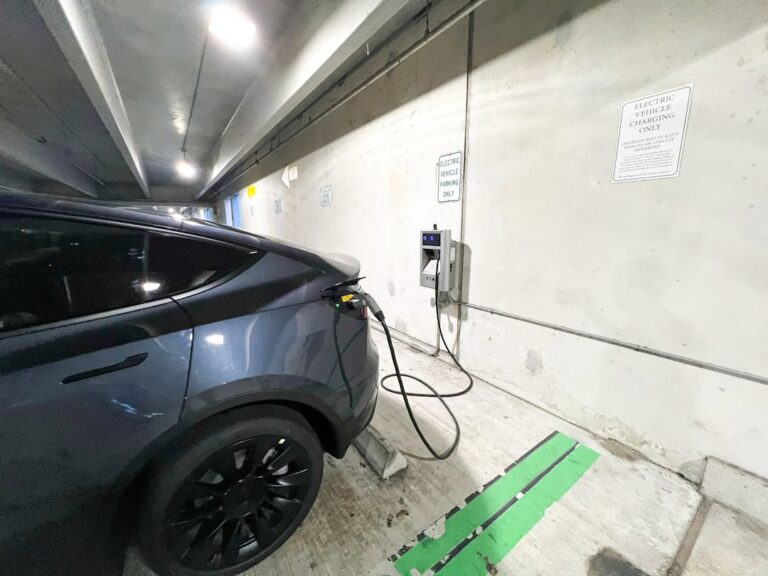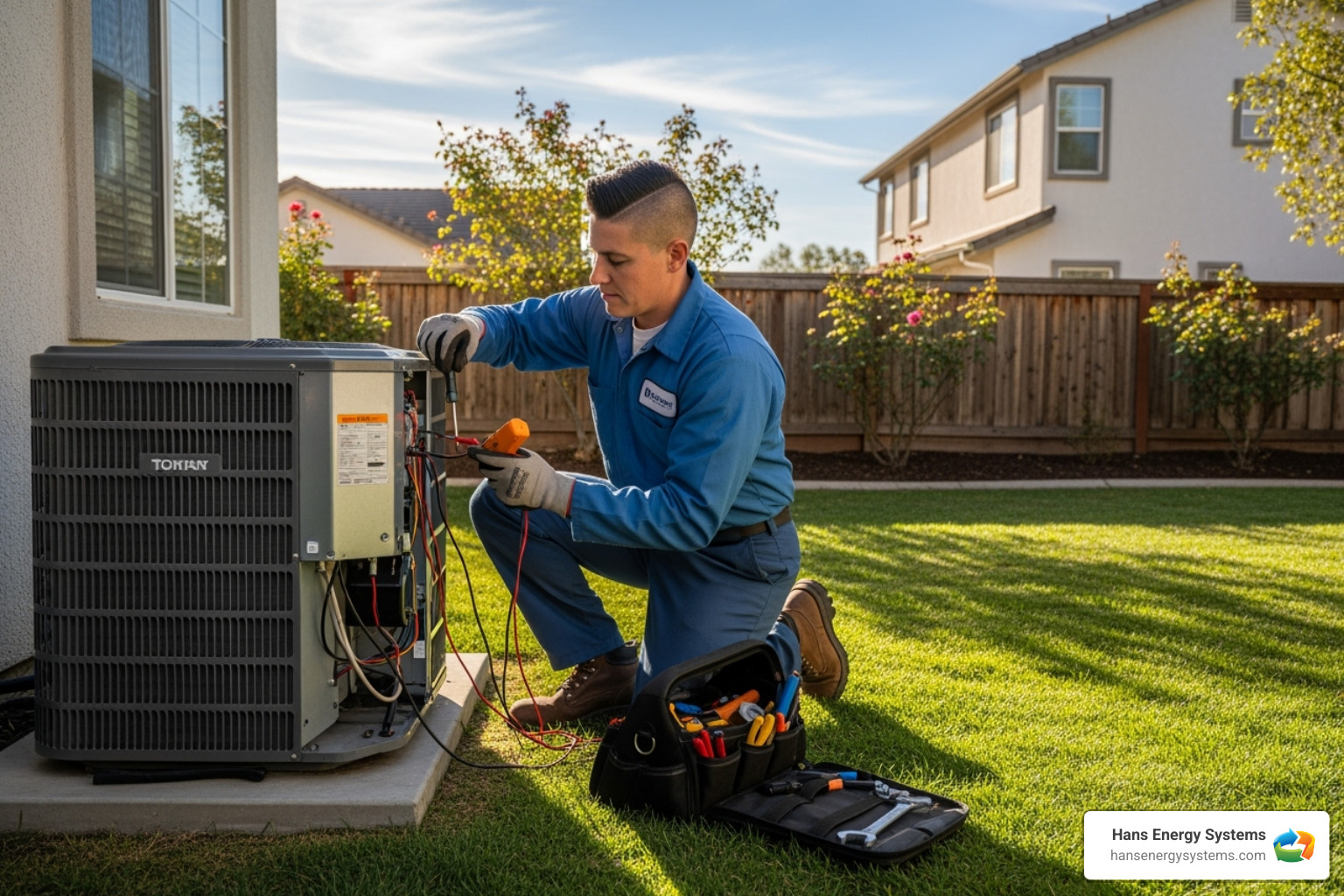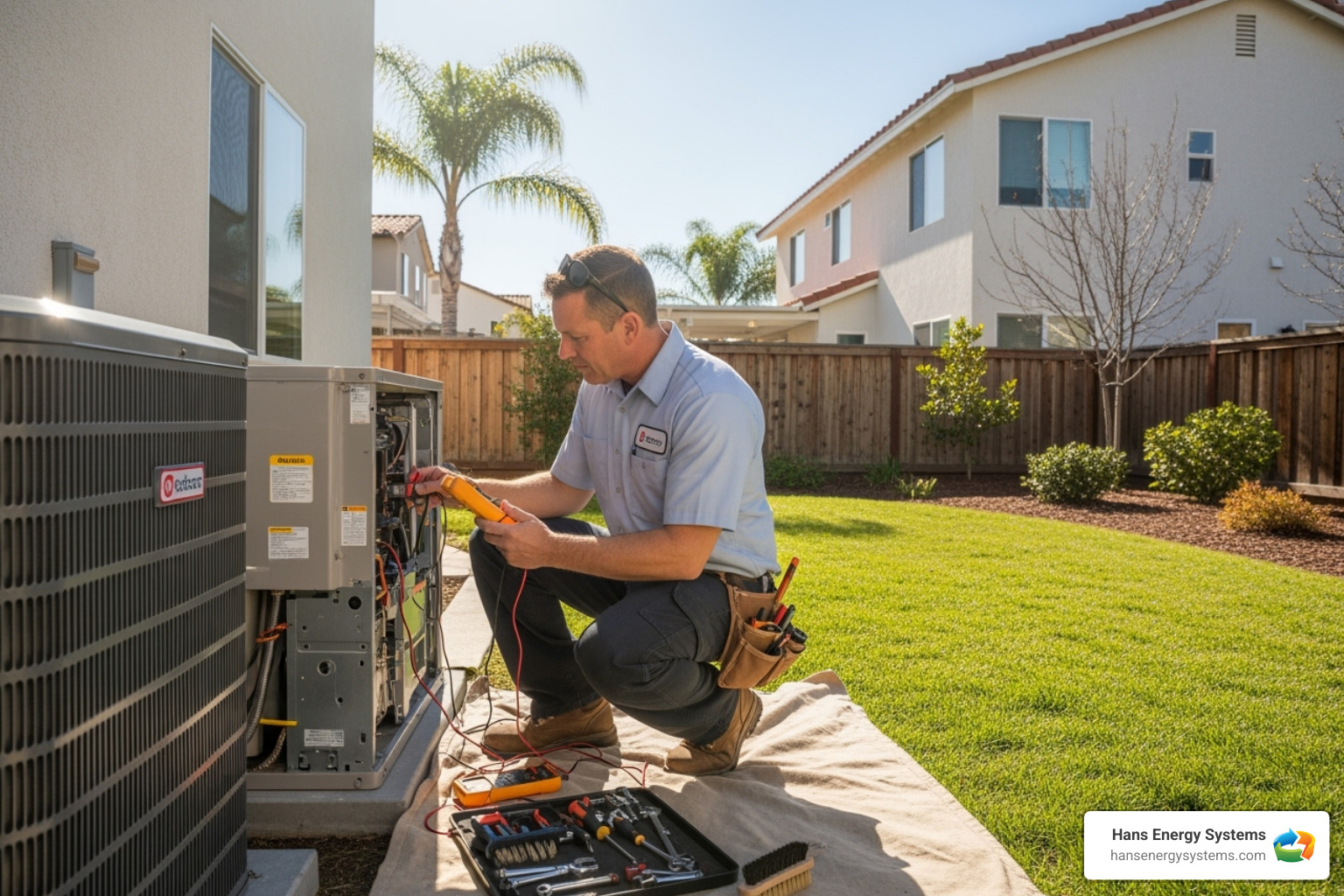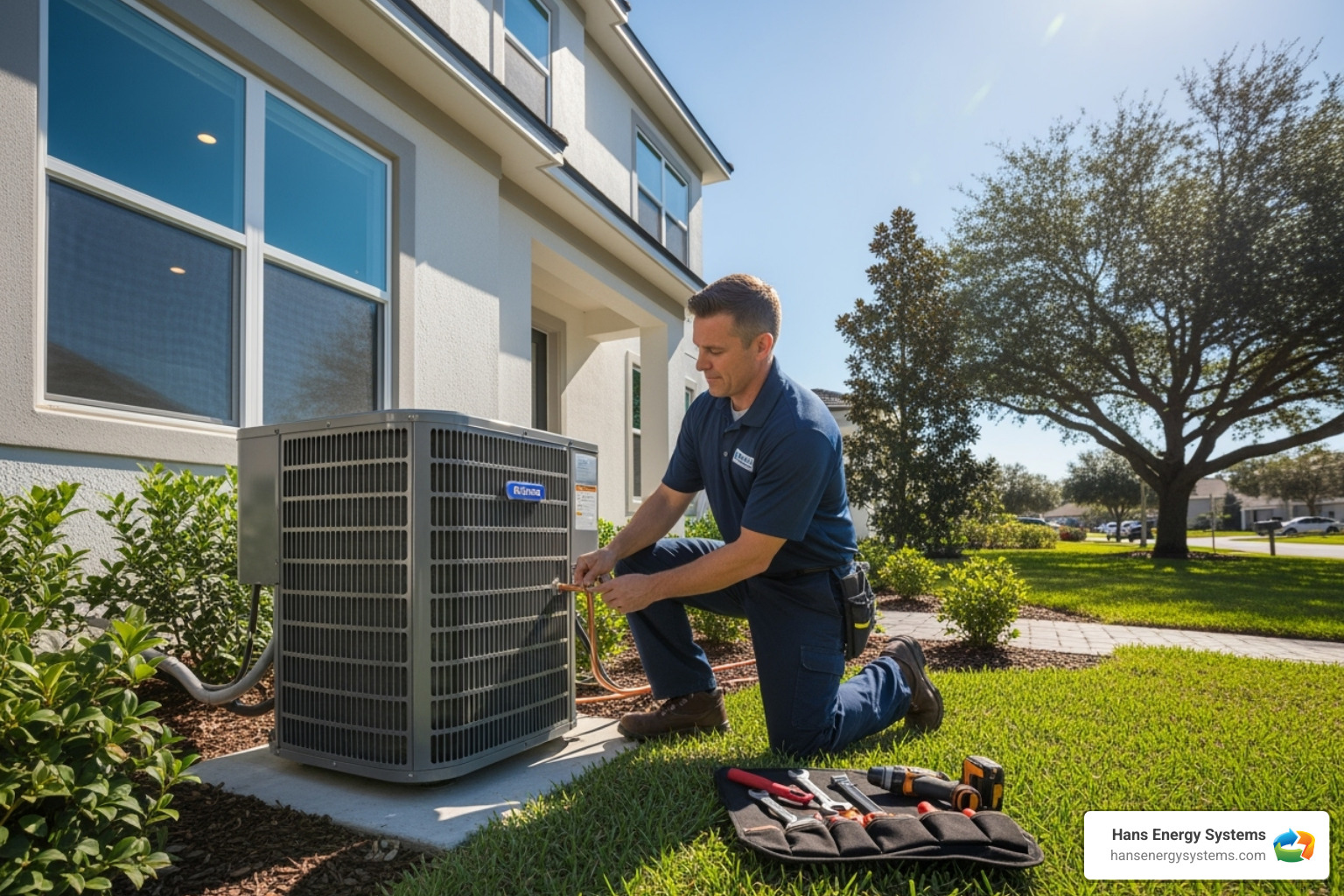Why Tesla Charger Install is the Smart Choice for California Homeowners
Tesla charger install transforms your daily driving experience by eliminating gas station visits and ensuring you wake up to a fully charged vehicle every morning. With California’s push toward electric vehicles and rising gas prices, home charging has become essential for Tesla owners who want convenience, savings, and energy independence.
Quick Tesla Charger Install Overview:
- Level 2 charging (240V) adds up to 44 miles of range per hour
- Professional installation ensures safety and code compliance
- Permits required in most California jurisdictions
- Federal tax credit available (30% up to $1,000 for residential)
- Installation time typically 2-5 hours for standard setups
The benefits extend far beyond convenience. As one Tesla owner shared, the peace of mind from “never worrying about gas prices again, charging your tank while you sleep and skipping out on oil changes” makes the investment worthwhile.
Home charging solves three major pain points:
- Time savings – No more detours to charging stations
- Cost control – Charge during off-peak hours for lower rates
- Energy independence – Especially when paired with solar panels
California’s electrical grid and building codes require specific installation standards that only certified electricians should handle. The process involves load calculations, proper permitting, and ensuring your home’s electrical system can safely support continuous high-amperage charging.
Professional installation isn’t just recommended – it’s essential for safety, warranty protection, and maximizing your Tesla’s charging capabilities.
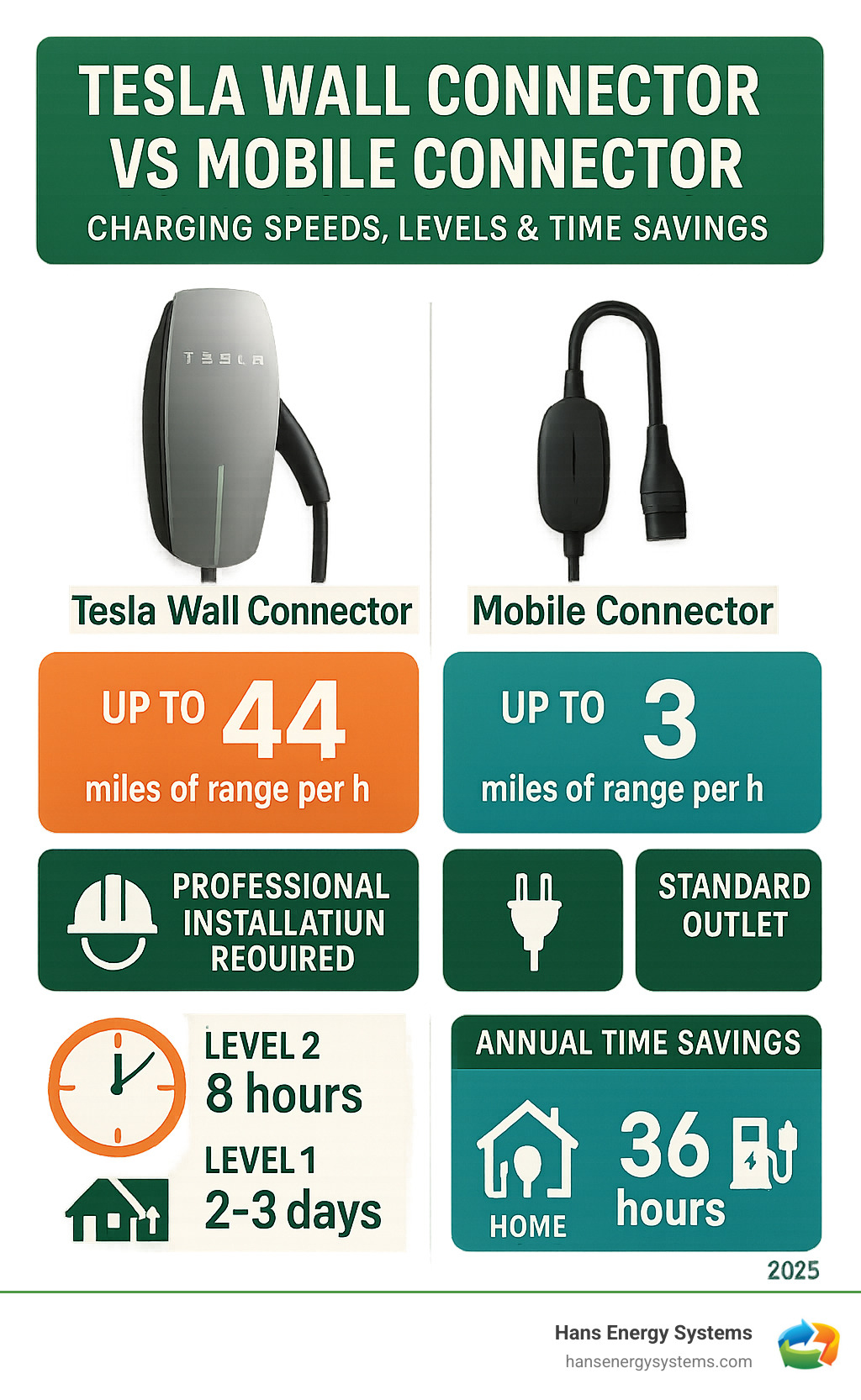
Understanding Your Tesla Home Charging Options
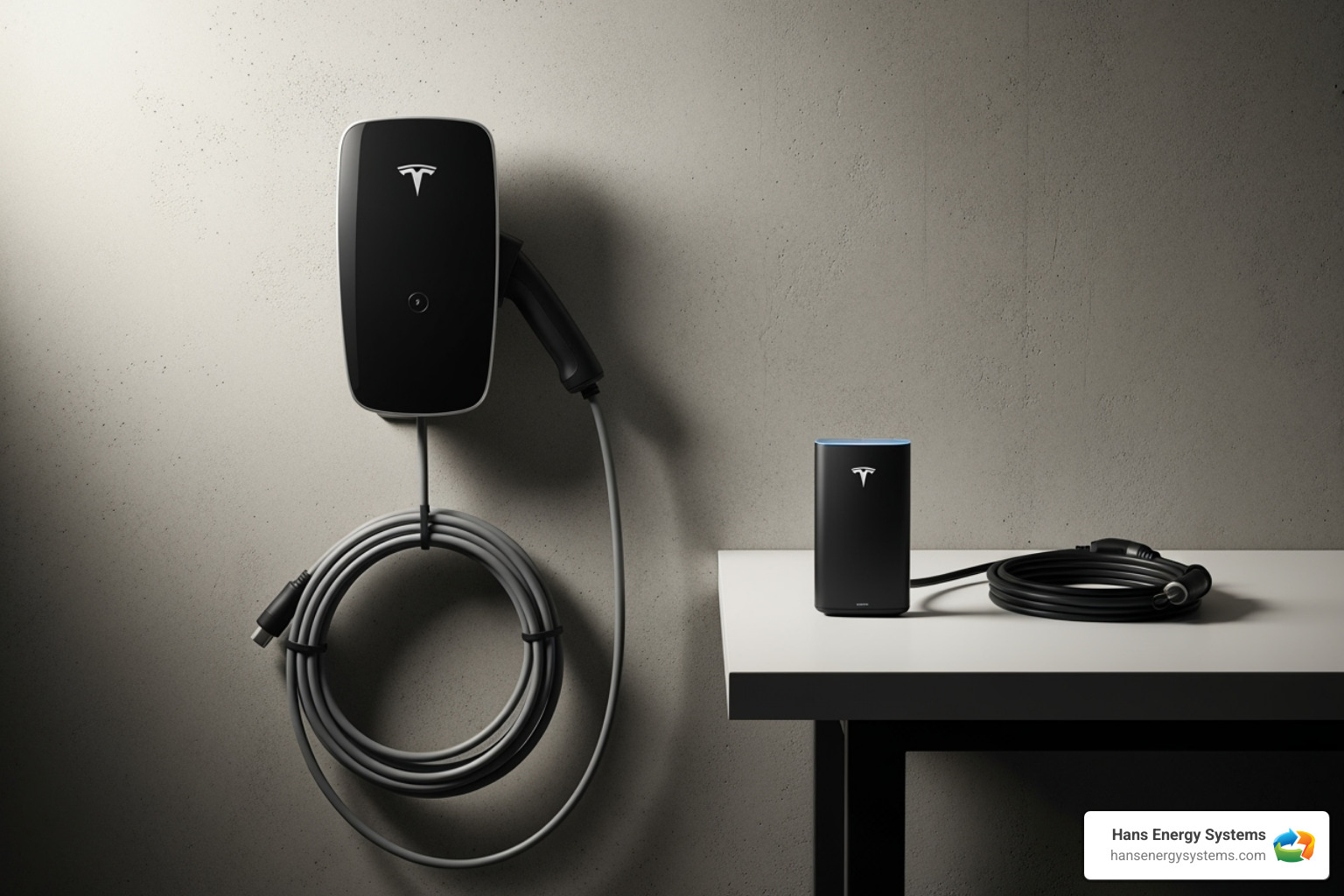
Making the switch to Tesla charging at home feels like joining an exclusive club – one where you never have to stop for gas again. But with different charging options available, it’s important to understand what works best for your daily routine and home setup.
Think of home charging like choosing the right tool for the job. You could fill a swimming pool with a garden hose, but you’d probably prefer something with a bit more power. The same logic applies to Tesla charger install options – while slower methods work, faster charging transforms your experience.
Comparing Charging Levels: Level 1, Level 2, and Level 3
Level 1 charging uses your regular household 120V outlet – the same one that powers your coffee maker each morning. It’s incredibly simple since it requires no special installation, just your Tesla Mobile Connector. The trade-off? It’s slow as molasses, adding only about 3 miles of range per hour. This works perfectly if you drive very short distances or have all night to charge, but it won’t rescue you from a nearly empty battery quickly.
Level 2 charging is where home charging really comes alive. Using a 240V outlet (like your dryer uses), it delivers serious power – up to 44 miles of range per hour. This means you can start charging after dinner and wake up to a completely full battery, even if you came home nearly empty. For most Tesla owners, Level 2 charging hits the sweet spot between speed and practicality. It’s fast enough for daily life but doesn’t require the massive electrical infrastructure of commercial charging stations.
Level 3 charging – also called DC Fast Charging or Tesla Boostrs – is the speed demon of the charging world. These powerful stations can add 200+ miles of range in 30 minutes. They’re fantastic for road trips when you need to charge quickly and get back on the road. However, Level 3 charging is only available at public stations – it’s not something you can install at home. The electrical requirements are massive, and the equipment costs more than most cars.
Choosing Your Equipment: Wall Connector vs. Mobile Connector
Tesla offers two main charging solutions for your home, each designed for different needs and lifestyles.
The Tesla Wall Connector is the premium choice for dedicated home charging. It mounts permanently to your garage wall and delivers the fastest possible charging speeds at home – up to 44 miles of range per hour. What makes it special isn’t just the speed, though. The Wall Connector connects to your Wi-Fi network, giving it smart features like automatic firmware updates and detailed charging statistics through the Tesla app.
If you have multiple Teslas (or plan to), the Wall Connector’s power sharing feature is brilliant. Multiple units can intelligently split the available power from your electrical panel, ensuring both vehicles charge efficiently without overloading your home’s electrical system. For complete details about professional installation, check out our Tesla Wall Charger Installation services.
The Tesla Mobile Connector is your portable charging companion. It comes with your Tesla and works with various outlet types using different adapters. With a standard household outlet, it provides Level 1 charging. Plug it into a 240V outlet with the right adapter, and you get Level 2 speeds up to 30 miles of range per hour.
The Mobile Connector shines as a backup solution or for travel. Taking a road trip and staying at a vacation rental with a dryer outlet? Perfect. Need emergency charging at a friend’s house? The Mobile Connector has you covered. However, for daily home charging, it can’t match the dedicated power and smart features of the Wall Connector.
| Feature | Tesla Wall Connector | Tesla Mobile Connector |
|---|---|---|
| Max Power | Up to 48A (11.5 kW) | Up to 32A (7.7 kW) |
| Charging Speed | Up to 44 miles per hour | Up to 30 miles per hour |
| Connectivity | Wi-Fi enabled with smart features | Basic charging only |
| Best For | Dedicated daily home charging | Portable and backup charging |
Most Tesla owners find that the Wall Connector transforms their daily routine, while the Mobile Connector provides peace of mind for everything else. Together, they create a complete charging ecosystem that adapts to your lifestyle.
The Professional Tesla Charger Install Process
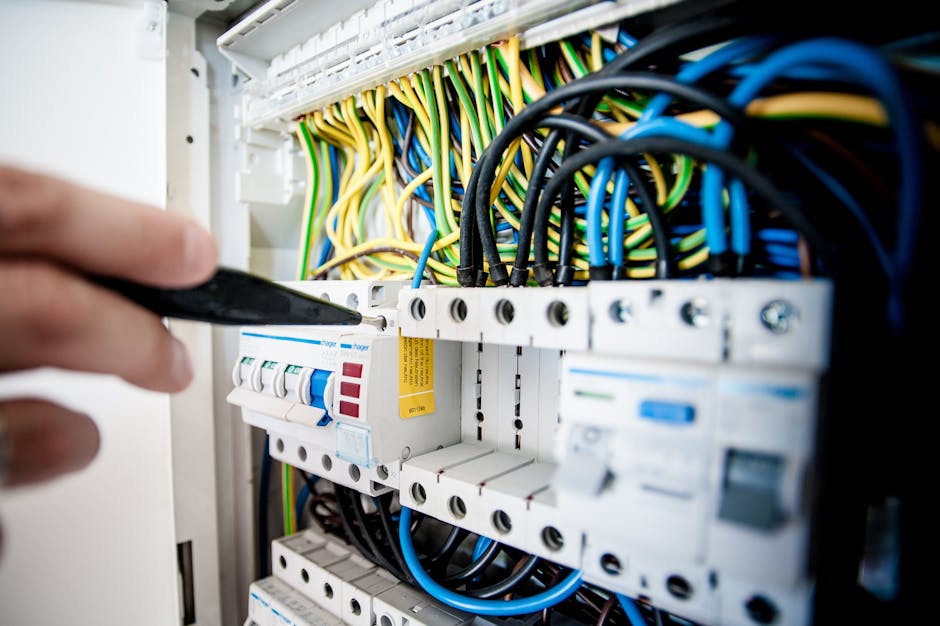
When it comes to your Tesla charger install, there’s really only one way to do it right: safely and by the book. We’ve seen too many well-intentioned DIY projects turn into expensive headaches (or worse, safety hazards). That’s why we always put safety first, ensuring every installation meets California’s strict electrical codes and gives you complete peace of mind.
Think of your Tesla charger installation as adding a new major appliance to your home – one that will work hard every single day for years to come. Just like you wouldn’t install a new electrical panel yourself, your EV charger deserves the same professional attention and expertise.
Pre-Installation: Site Assessment and Electrical System Check
Before we even think about mounting your charger or running any wires, we need to get to know your home’s electrical personality. Every house is different, and what works perfectly in one garage might need a completely different approach next door.
Finding the ideal charger location is like choosing the perfect spot for your morning coffee maker – it needs to be convenient, accessible, and practical for daily use. Most Tesla owners prefer their garage installation, but we also handle plenty of outdoor setups. The key is making sure you can easily plug in without wrestling with cables or awkward angles.
Proximity to your electrical panel plays a huge role in how straightforward your installation will be. When your chosen charging spot is close to your main panel, we can often complete the job in just a few hours. But don’t worry if your panel is on the opposite side of the house – we have solutions for every situation.
Your home’s electrical capacity is where things get really important. Modern Tesla chargers draw a significant continuous load – think of it like running your electric dryer for hours at a time. We perform a detailed load calculation to make sure your electrical system can handle this new demand safely. Sometimes this means recommending a panel upgrade, but we’ll walk you through exactly what’s needed and why.
For homeowners who want to dive deeper into the technical details, this Home Charging Wiring Guide offers excellent insights into the electrical considerations involved.
DIY vs. Professional Tesla Charger Install: A Safety-First Approach
We get it – there’s something satisfying about tackling a home project yourself. But when it comes to your Tesla charger install, we strongly recommend leaving this one to the professionals. This isn’t about us trying to drum up business; it’s about keeping you and your family safe.
High-voltage electrical work carries real risks that go far beyond a typical weekend project. Mistakes can lead to electrical fires, serious injuries, or damage to your Tesla’s charging system. Even if everything seems to work initially, improper installation can create hidden problems that show up months later.
Electrical code compliance is another major concern with DIY installations. California has specific requirements for EV charger installations, and these codes exist for good reasons. A failed inspection can mean tearing out work and starting over – not to mention potential issues with your homeowner’s insurance.
When you choose professional installation, you’re getting more than just technical expertise. You’re getting someone who understands local codes, has the right tools for the job, and stands behind their work with a solid warranty. Tesla maintains a network of Tesla Certified Installers who receive specialized training on their charging equipment.
Peace of mind is worth a lot when you’re dealing with something you’ll use every single day for years to come.
Factors Influencing Your Tesla Charger Install Complexity
Not all Tesla charger installations are created equal. While some homes allow for a straightforward few-hour installation, others require more complex electrical work. We always assess these factors upfront so there are no surprises.
Long wire runs from your electrical panel to your charging location can add complexity to the project. When we need to route heavy-gauge wiring through finished walls (called wall fishing) or install extensive conduit systems, it naturally takes more time and planning.
Outdoor installations often require trenching to run underground wiring safely to detached garages or carports. While this adds to the project scope, it opens up charging possibilities for homes where the garage isn’t connected to the main house.
Electrical panel upgrades are sometimes necessary when your current panel lacks sufficient capacity for continuous EV charging. This isn’t necessarily a bad thing – it’s actually an opportunity to modernize your home’s electrical system for today’s energy demands.
Subpanel installation can sometimes provide a more efficient solution than upgrading your main panel, especially when the charging location is far from your main electrical service.
We also handle special mounting situations, including Tesla charger ceiling mount installations that maximize floor space and provide optimal cable management.
The bottom line? Every home is unique, and we tailor our approach to give you the safest, most convenient charging setup possible.
Maximizing Value: Incentives and Long-Term Benefits
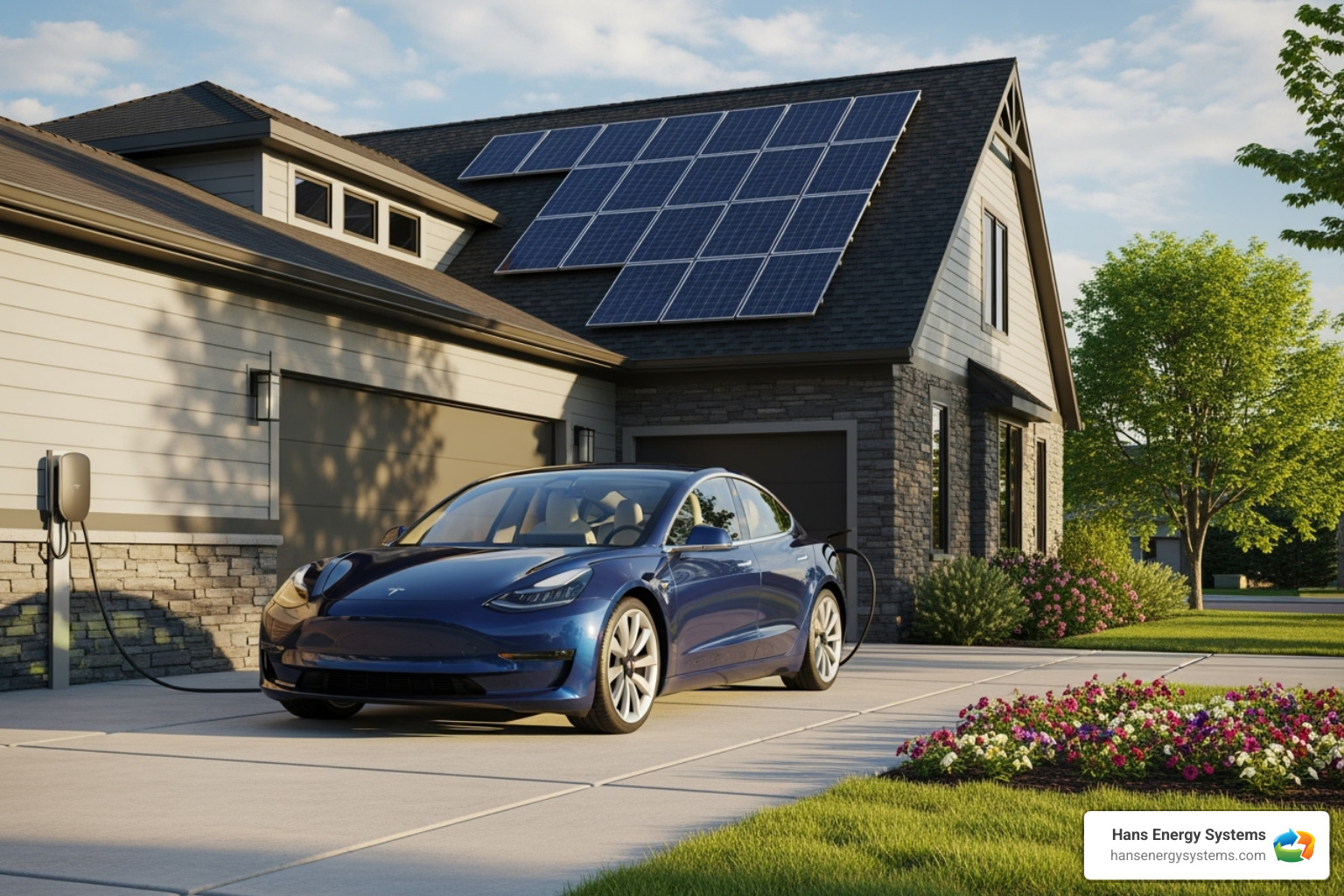
Your Tesla charger install is more than just a convenience upgrade – it’s a smart investment that keeps paying dividends long after installation day. While the immediate joy of never visiting gas stations again is wonderful, the real excitement comes from the financial savings and sustainable energy benefits that compound over time.
Think of it this way: every night while you sleep, your Tesla is quietly “filling up” at a fraction of what you’d pay at the pump. But the value goes much deeper than just fuel savings.
Federal, State, and Utility Incentives
The best part about investing in home charging? You don’t have to shoulder the entire cost alone. Various programs exist specifically to encourage homeowners like you to make the switch to electric vehicle charging.
The federal Alternative Fuel Vehicle Refueling Property Credit offers a 30% tax credit up to $1,000 for residential EV charger installations. This means Uncle Sam is essentially offering to help pay for your charging setup – not a bad deal! You can learn more about this valuable credit through the Alternative Fuel Vehicle Refueling Property Credit program details.
Here in California, state and local rebate programs often stack on top of federal incentives. Many municipalities throughout San Diego County offer additional rebates that can significantly reduce your out-of-pocket investment.
Your utility company likely wants to help too. Many power providers offer special rebate programs for EV charger installations, recognizing that electric vehicles help balance grid demand. Pacific Gas & Electric, for example, provides substantial rebates through their residential charging solutions rebate program.
Even better, most utilities offer special off-peak charging rates that let you charge your Tesla when electricity demand is lowest – typically overnight when you’re sleeping anyway. These time-of-use rates can cut your charging costs in half compared to peak hours.
Beyond Convenience: Smart Charging and Solar Integration
The Tesla Wall Connector isn’t just a power outlet – it’s a smart device that transforms how you think about energy in your home. The Wi-Fi connectivity means your charger talks to your Tesla app, giving you complete control over your charging experience.
You can view detailed charging statistics, track your energy usage, and even set up access controls if you want to share your charger with family members or guests. The system provides remote diagnostics too, so any issues can often be resolved without a service call.
Automatic firmware updates keep your Wall Connector running at peak performance. Just like your Tesla receives over-the-air updates that add new features, your home charger gets smarter over time without any effort on your part.
The real magic happens with scheduled charging. Set your Tesla to charge during those cheaper off-peak hours, and you’ll wake up to a full battery and lower energy bills. The system handles everything automatically once you plug in.
But here’s where things get really exciting: solar integration. When you combine your Tesla charger install with solar panels, you’re essentially creating your own personal gas station powered by sunshine. Imagine never paying for fuel again – not gas, not electricity from the grid – just pure solar energy captured right from your San Diego County rooftop.
This setup delivers true energy independence. During the day, your solar panels generate clean electricity that either powers your home or gets stored for later use. At night, that same solar energy charges your Tesla. You’re reducing your grid reliance while dramatically shrinking your carbon footprint.
We’ve helped countless San Diego homeowners achieve this energy freedom through our Charging Tesla with Solar Panels solutions. The combination of federal solar incentives, EV charger credits, and eliminated fuel costs creates a powerful financial advantage that grows stronger every year.
The result? A future-proofed home that’s ready for whatever the energy landscape brings, sustainable transportation that aligns with California’s environmental goals, and smart home integration that makes your daily routine effortlessly efficient.
Frequently Asked Questions about Tesla Charger Installation
After helping countless San Diego County homeowners with their Tesla charger install projects, we’ve noticed the same questions come up again and again. We love sharing what we’ve learned, so here are the answers to the most common questions we hear.
Can I use a regular outlet to charge my Tesla?
You absolutely can! Your Tesla comes with a Mobile Connector that plugs right into any standard 120V household outlet – the same type you use for your coffee maker or phone charger. This is called Level 1 or “trickle” charging, and while it’s incredibly convenient, it’s also quite slow, adding only about 3-4 miles of range per hour.
Think of it this way: if you drive 40 miles a day, you’d need about 10-12 hours plugged into that regular outlet just to replace what you used. That works fine if you’re home all evening and overnight, but it doesn’t leave much buffer for longer trips or unexpected drives.
For most Tesla owners, a professionally installed 240V Level 2 charger transforms the experience completely. Instead of those 3-4 miles per hour, you’re looking at 25-44 miles of range per hour depending on your setup. This means you can fully charge your Tesla overnight, even starting from nearly empty, and wake up ready for whatever the day brings.
How long does a typical installation take?
Here’s where it really depends on your home’s unique situation. For a straightforward Tesla charger install where your electrical panel has adequate capacity and we’re mounting the Wall Connector in your garage near the panel, we can often complete everything in just a few hours.
The process involves mounting your new Wall Connector, running the appropriate wiring (usually just a short run), making the connections at your electrical panel, and testing everything to ensure it’s working perfectly. It’s surprisingly quick when everything aligns well.
However, some homes need more extensive work. If your electrical panel is on the opposite side of the house from your garage, we might need to run conduit and wiring through walls or even underground. Panel upgrades can add significant time to the project, sometimes requiring a full day or more. Outdoor installations that need trenching for underground cables also take longer.
The good news? We’ll give you a clear timeline during our initial assessment, so you’ll know exactly what to expect before we start.
Do I need a permit for a Tesla charger install?
Yes, and we’re glad you asked! Most jurisdictions throughout San Diego County require an electrical permit for Level 2 EV charger installations. This isn’t just red tape – it’s actually a crucial safety measure that protects you, your family, and your home.
The permitting process ensures your installation meets all local electrical codes and safety standards. It includes having a qualified inspector verify that everything was done correctly, from the wire sizing and circuit protection to the grounding and installation methods.
Here’s the best part: when you work with professional installers like us, we handle the entire permitting process for you. We submit the applications, coordinate with the local building department, schedule the inspections, and make sure everything passes on the first try. You don’t have to steer any bureaucracy or worry about whether your installation meets code requirements.
This professional approach also protects your home’s warranty and ensures your insurance coverage remains intact. Some insurance companies can actually deny claims related to electrical issues if the work wasn’t properly permitted and inspected.
Conclusion
Your Tesla charger install journey represents more than just adding a new appliance to your home – it’s your gateway to a smarter, more sustainable way of living. Throughout this guide, we’ve walked together through the exciting world of home EV charging, from understanding the different charging levels to exploring the smart features that make Tesla’s Wall Connector truly special.
The path forward is clear when you focus on the fundamentals. Thoughtful planning sets the foundation for success, whether you’re choosing between the Wall Connector and Mobile Connector or determining the ideal location in your garage. Safety and code compliance aren’t just checkboxes to tick – they’re your protection against potential hazards and the key to a installation that will serve you reliably for years to come.
But perhaps most importantly, we’ve seen how the long-term value of home charging extends far beyond the daily convenience of waking up to a fully charged Tesla. When you factor in federal tax credits, utility rebates, off-peak charging rates, and the potential for solar integration, your home charging station becomes a smart financial investment that keeps paying dividends.
The beauty of a professional Tesla charger install lies in how it transforms your relationship with transportation. No more gas station detours, no more range anxiety, and no more wondering about fluctuating fuel prices. Instead, you get the peace of mind that comes from energy independence, especially when paired with solar panels.
For homeowners in San Diego County, our team at Hans Energy Systems brings the expertise and dedication needed to make your EV charging dreams a reality. We handle everything from the initial site assessment and permitting to the final inspection, ensuring your system delivers optimal performance and safety. Our commitment to exceptional customer service, competitive pricing, and reliable, professional work means you can trust us to get it right the first time.
Ready to transform how you power your Tesla? The future of convenient, sustainable transportation is waiting in your garage. Get started with your Tesla Wall Charger Installation and take the first step toward true energy independence.


